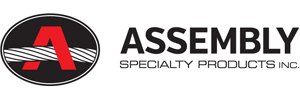OSHA Guide – Cranes and Derricks in Construction
MENU
- Introduction
- Employer Responsibilities
- Section 1400 – Scope
- Section 1401 – Definitions
- Section 1402 – Ground Conditions
- Sections 1403-1406 – Assembly and Disassembly
- Sections 1407-1411 – Power Lines
- Section 1412 – Inspections (with Section 1435(f)-Tower Crane Inspections) and Section 1436(p)-Derricks Inspections)
- Section 1413 – Wire Rope Inspection
- Section 1414 – Wire Rope – Selection and Installation Criteria
- Sections 1415 Safety Devices & 1416 Operational Aids
- Section 1417 – Operation
- Section 1418 – Authority to Stop Operation
- Section 1419-1422 – Signals
- Section 1423 – Fall Protection
- Section 1424 – Work Area Control
- Section 1425 – Keeping Clear of the Load
- Section 1426 – Free Fall and Controlled Load Lowering
- Section 1427 – Operator Qualification and Certification
- Section 1428 – Signal Person Qualifications
- Section 1429 – Qualifications of Maintenance & Repair Employees
- Section 1430 – Training
- Section 1431 – Hoisting Personnel
- Section 1432 – Multiple-Crane/Derrick Lifts
- Section 1433 – Design, Construction and Testing
- Section 1434 – Equipment Modifications
- Section 1435 – Tower Cranes
- Section 1436 – Derricks
- Section 1437 – Floating Cranes/Derricks and Land Cranes/Derricks on Barges
- Section 1438 – Overhead & Gantry Cranes
- Section 1439 – Dedicated Pile Drivers
- Section 1440 – Sideboom Cranes
- Section 1441 – Equipment with a Rated Hoisting/Lifting Capacity of 2,000 Pounds or Less
- Directory of States with Approved Occupational Safety and Health Programs
- Workers’ Rights
- OSHA Assistance, Services and Programs
- OSHA Regional Offices
- NIOSH Health Hazard Evaluation Program
Section 1433 – Design, Construction and Testing
For equipment to be used safely, it must be built with appropriate safety features and maintained in a safe condition. Although manufacturers are not directly subject to this standard, crane users rely on manufacturers to see that the equipment is built and tested so that it is safe when it leaves the manufacturer. Therefore, with the exceptions discussed below, the crane user’s obligations under this section are met where the employer can refer to documentation from the manufacturer showing that the equipment has been designed, constructed and tested in accord with this section and the equipment has not changed since it was manufactured (except in accord with section 1434 – equipment modifications).
You cannot rely on manufacturer documentation to comply with the following requirements:
Rated Capacity and Related Information
The following information must be available in the cab:
- A complete range of the manufacturer’s equipment rated capacities
- A work area chart for which capacities are listed in the load chart. (The work area figure and load chart must clearly indicate the areas where no load is to be handled)
- Recommended reeving for the hoist lines
- Recommended parts of hoist reeving, size, and type of wire rope for various equipment loads.
- Recommended boom hoist reeving diagram, where applicable; size, type and length of wire rope.
- Tire pressure (where applicable)
- Caution or warnings relative to limitations on equipment and operating procedures, including an indication of the least stable direction
- Position of the gantry and requirements for intermediate boom suspension (where applicable)
- Instructions for boom erection and conditions under which the boom, or boom and jib combinations, may be raised or lowered
- Whether the hoist holding mechanism is automatically or manually controlled, whether free fall is available, or any combination of these
- The maximum telescopic travel length of each boom telescopic section
- Whether sections are telescoped manually or with power
- The sequence and procedure for extending and retracting the telescopic boom section
- Maximum loads permitted during the boom extending operation, and any limiting conditions or cautions
- Hydraulic relief valve settings specified by the manufacturer
Miscellaneous Requirements
- Load hooks (including latched and unlatched types), ball assemblies, and load blocks must be of sufficient weight to overhaul the line from the highest hook position for boom or boom and jib lengths and the number of parts of the line in use
- Hook and ball assemblies and load blocks must be marked with their rated capacity and weight
- Hooks must be equipped with latches, except where a qualified person has determined that it is safer to hoist and place the load without latches (or with the latches removed/tied-back), and routes for the loads are pre-planned to ensure that no employee is required to work in the fall zone except for employees necessary for the hooking or unhooking of the load
- Posted warnings required by this standard as well as those originally supplied with the equipment by the manufacturer must be maintained in legible condition
- An accessible fire extinguisher must be on the equipment

